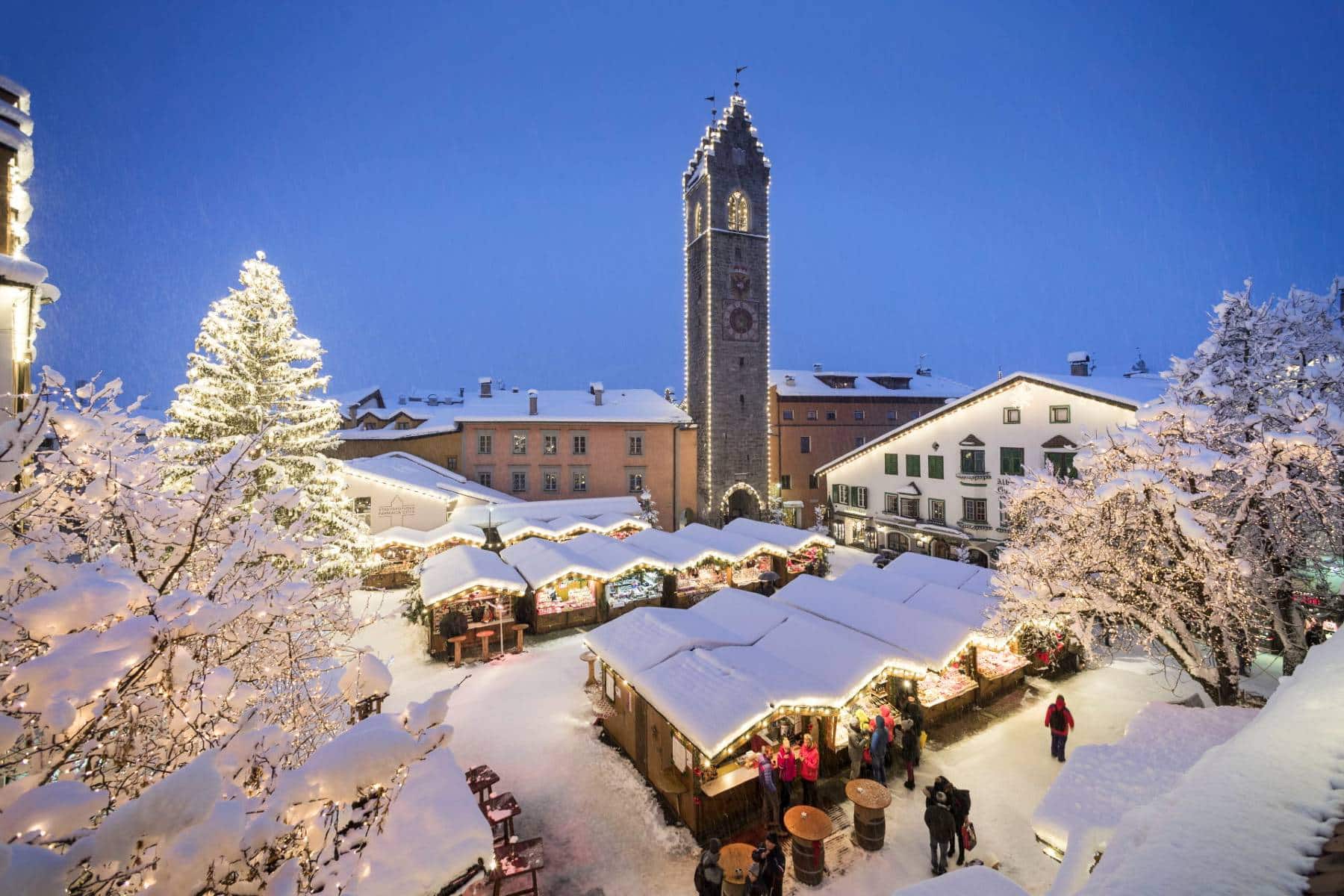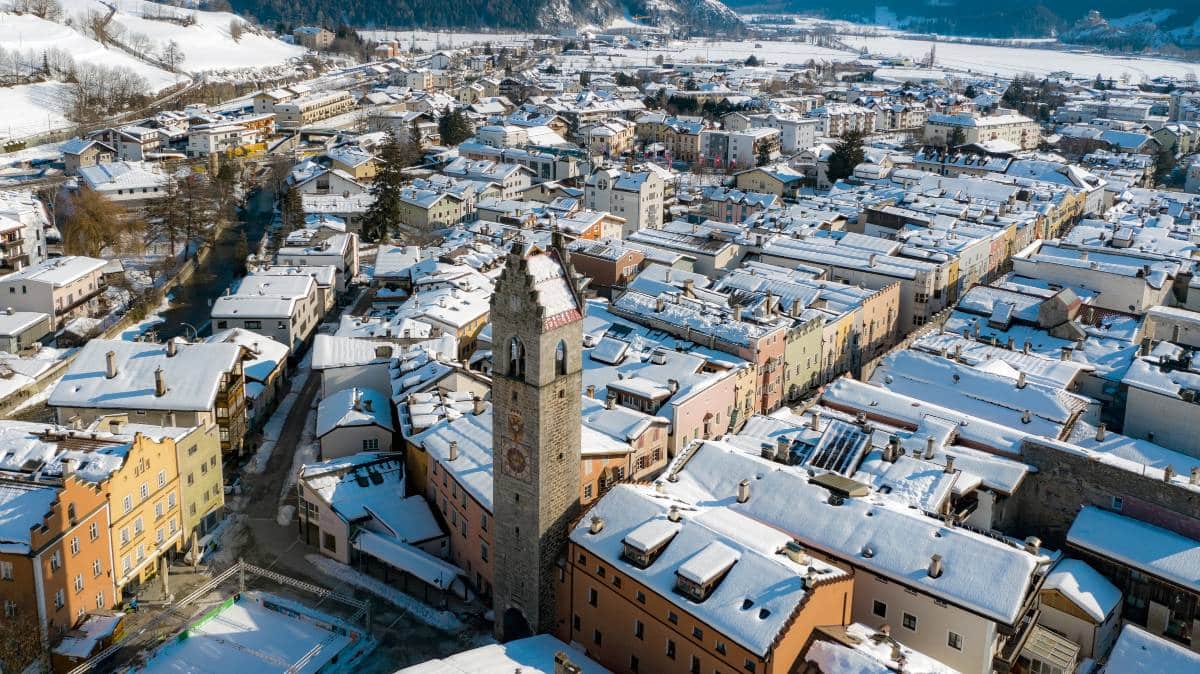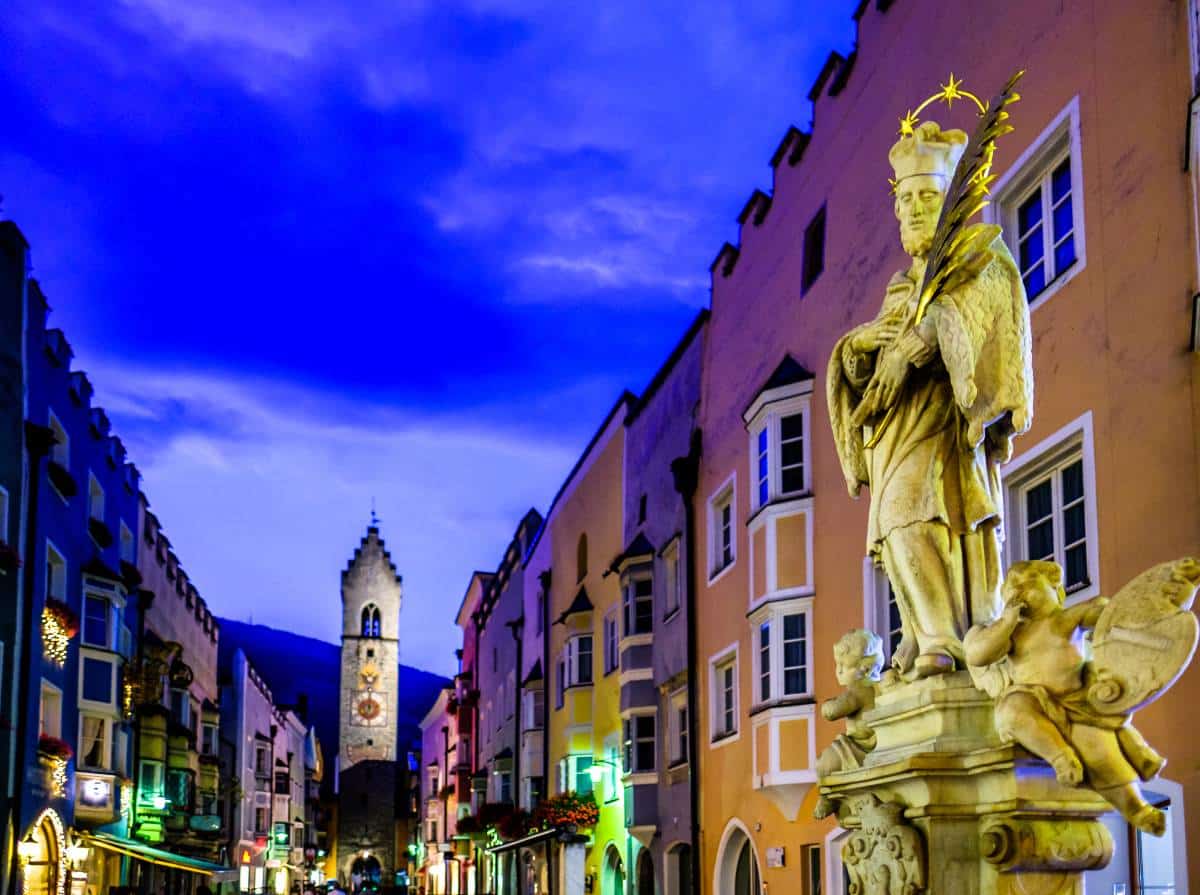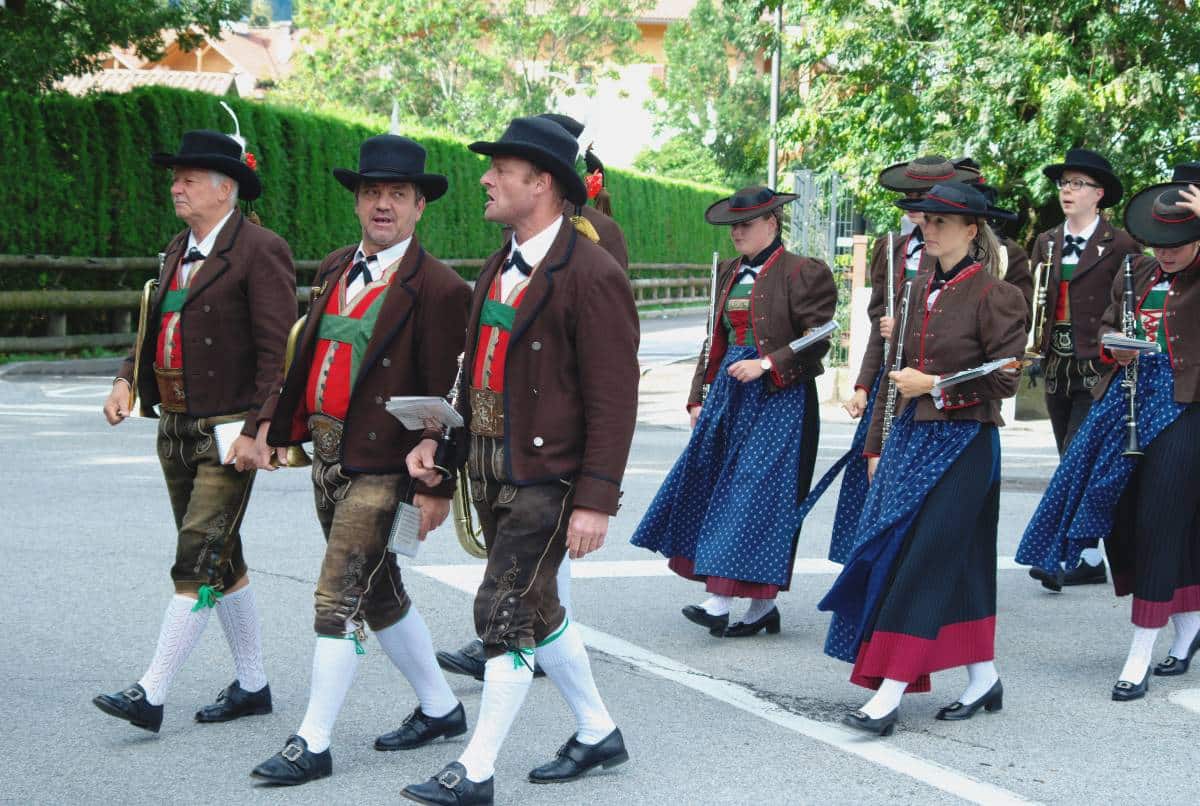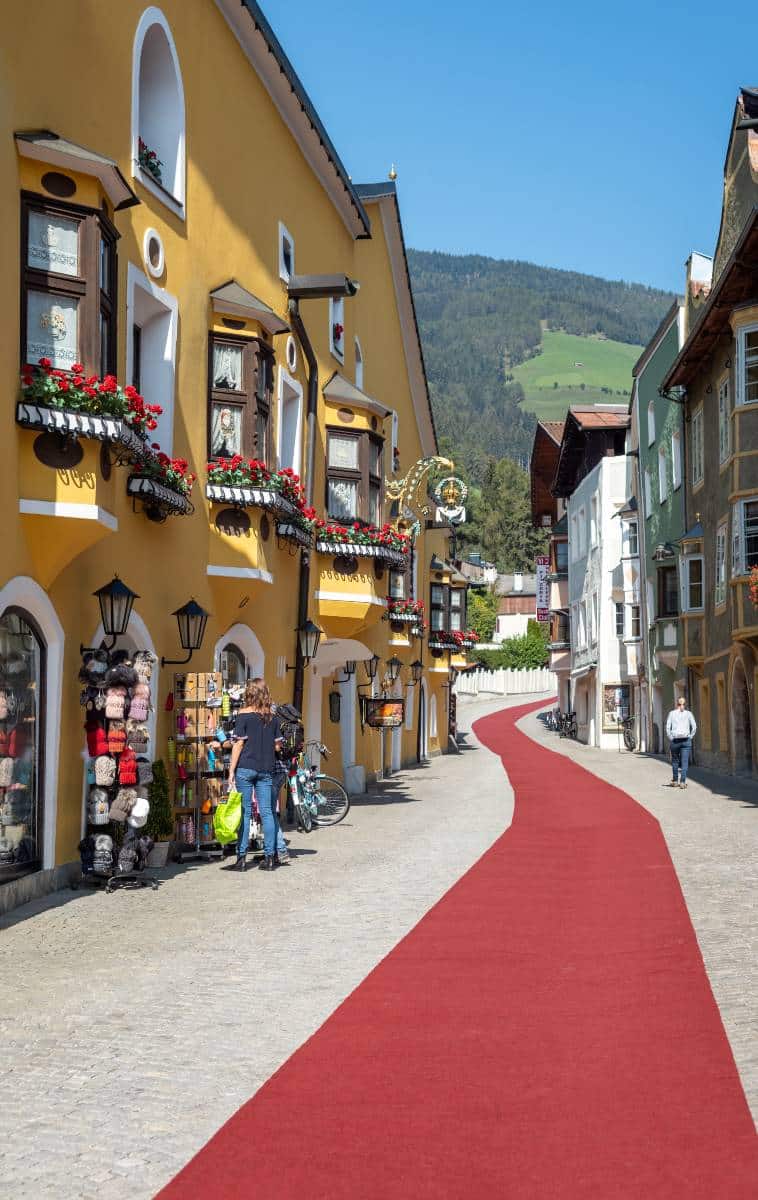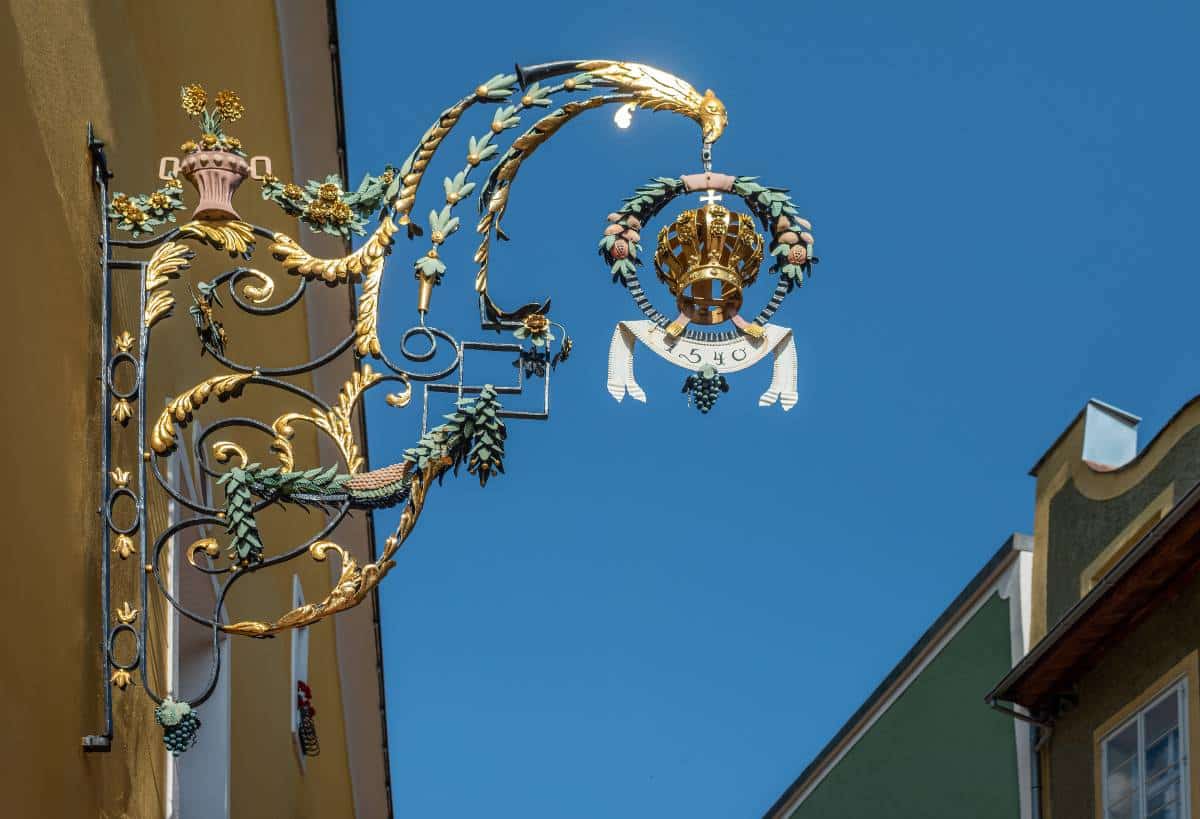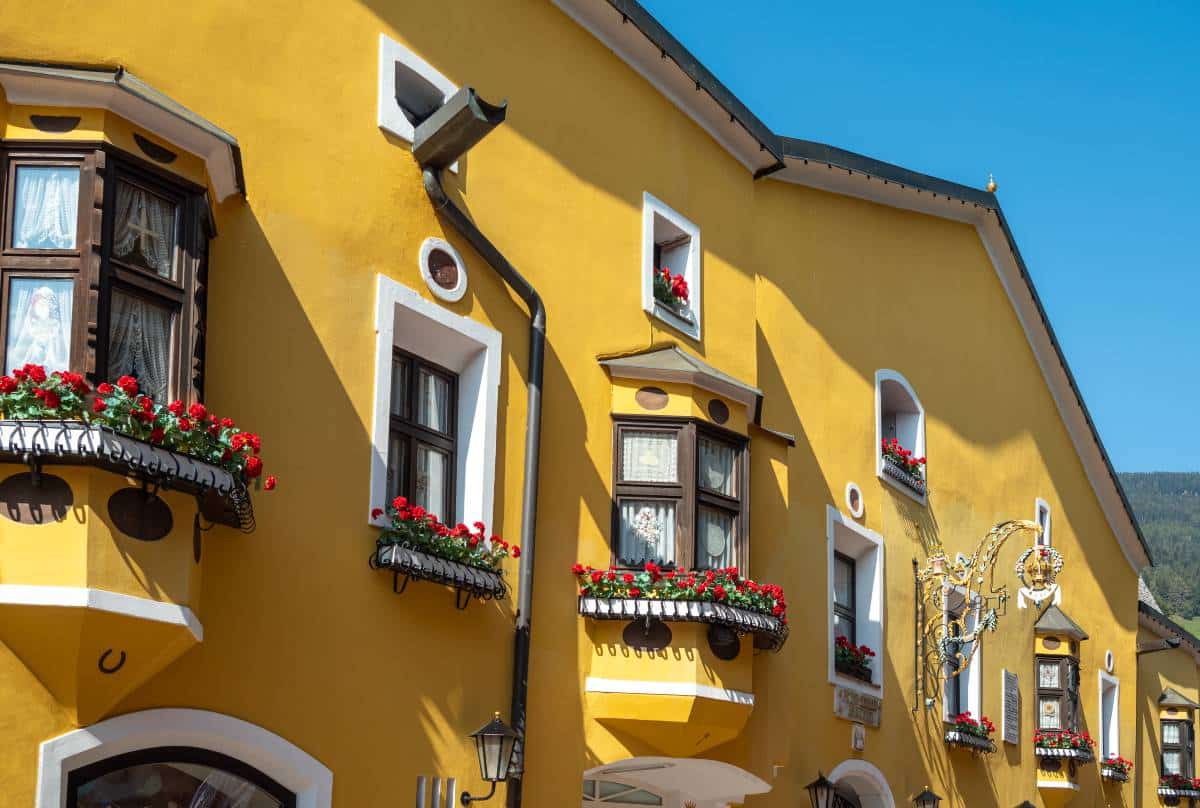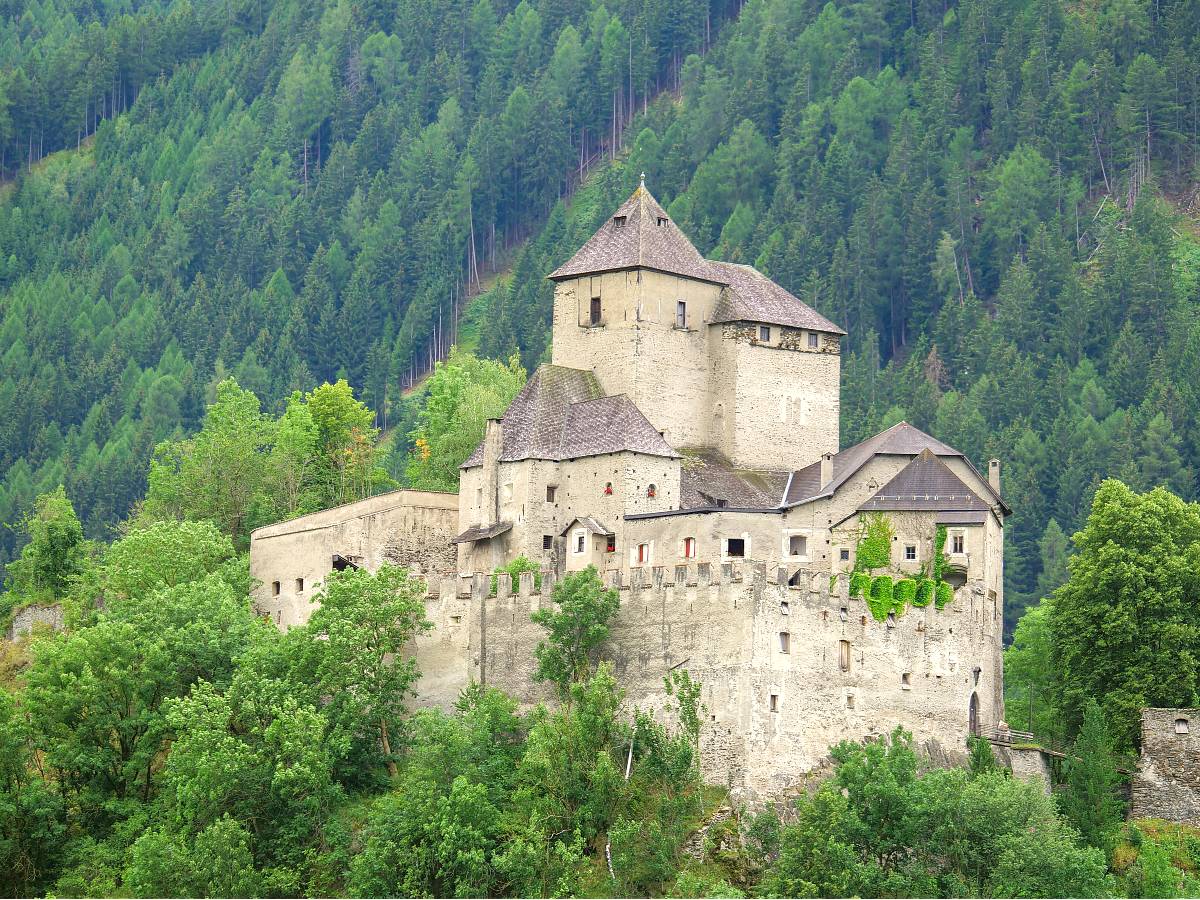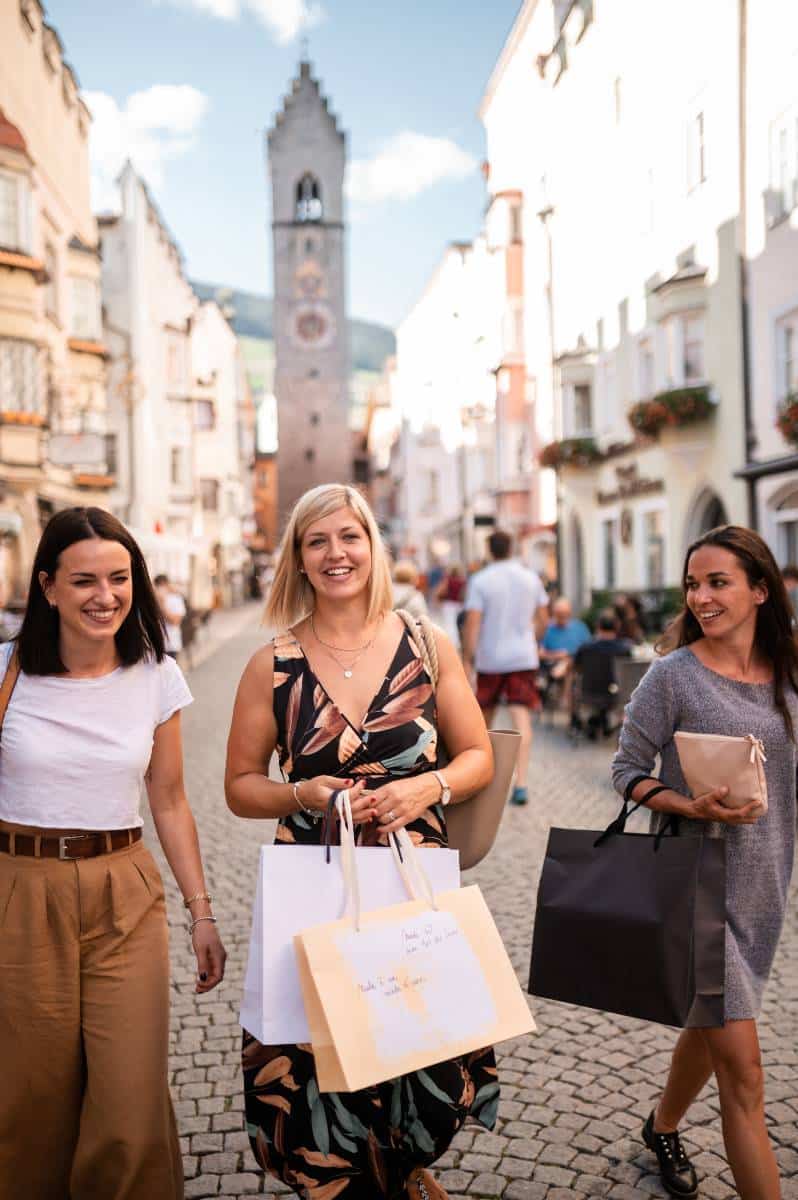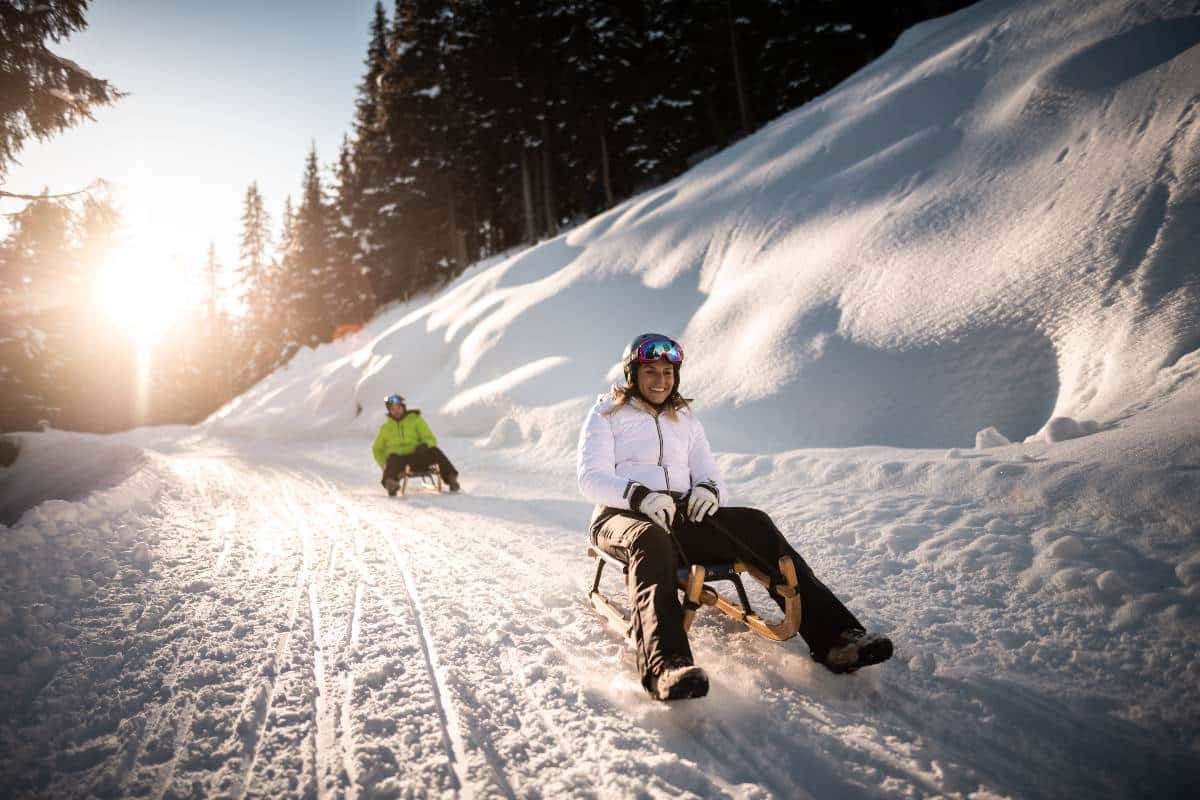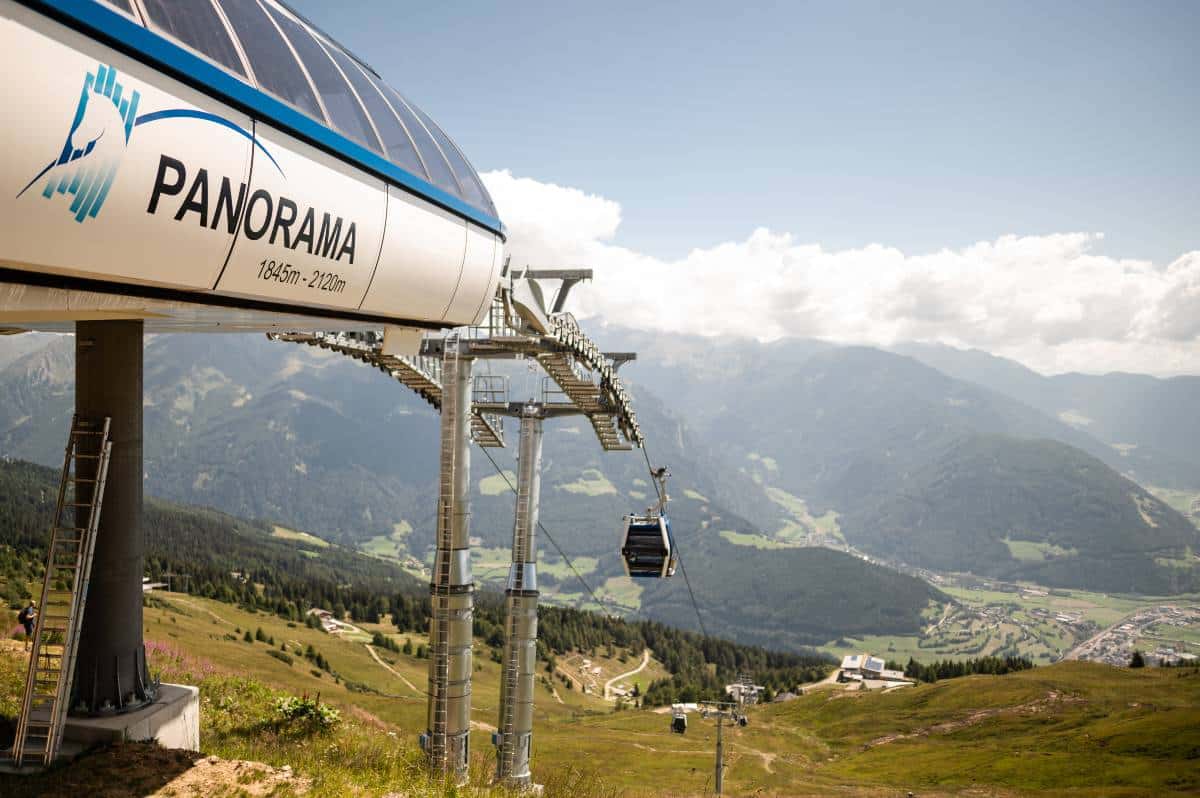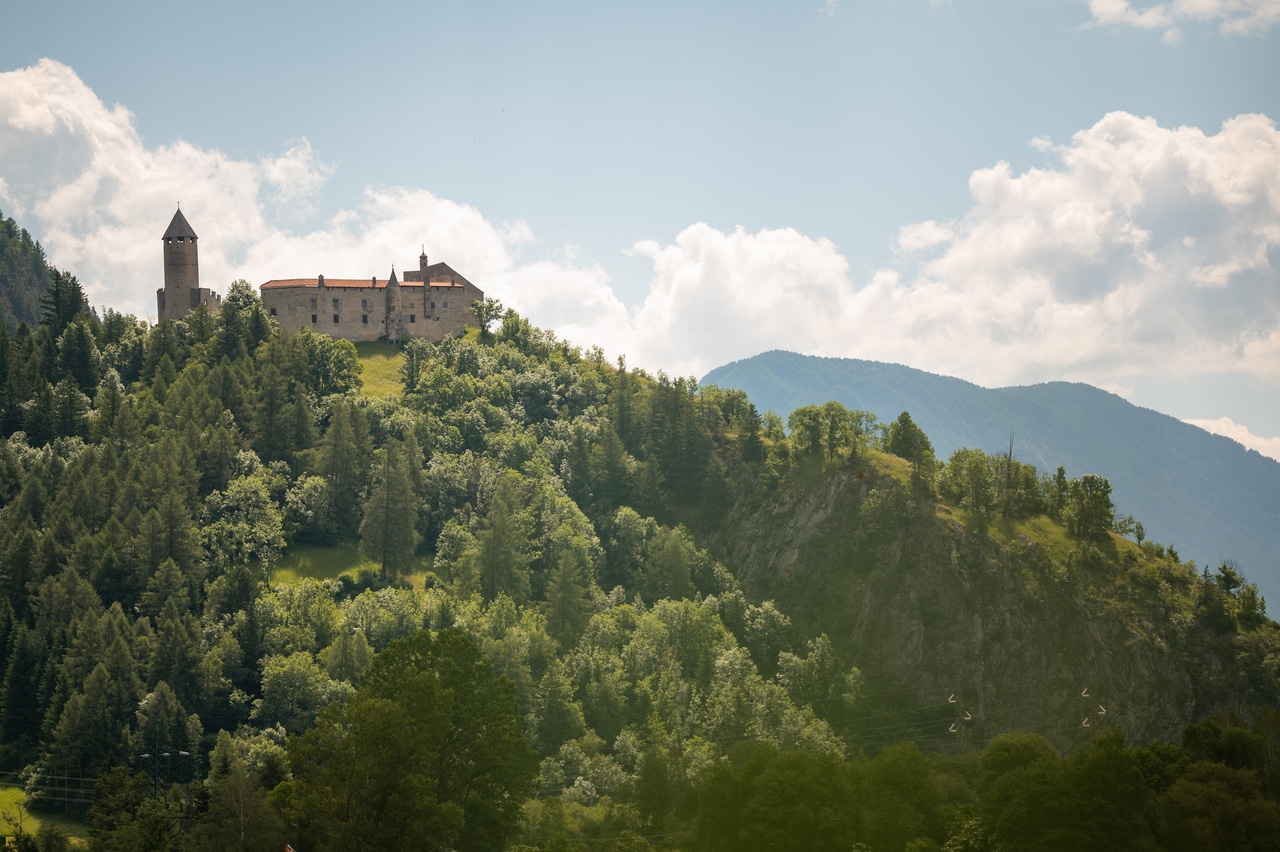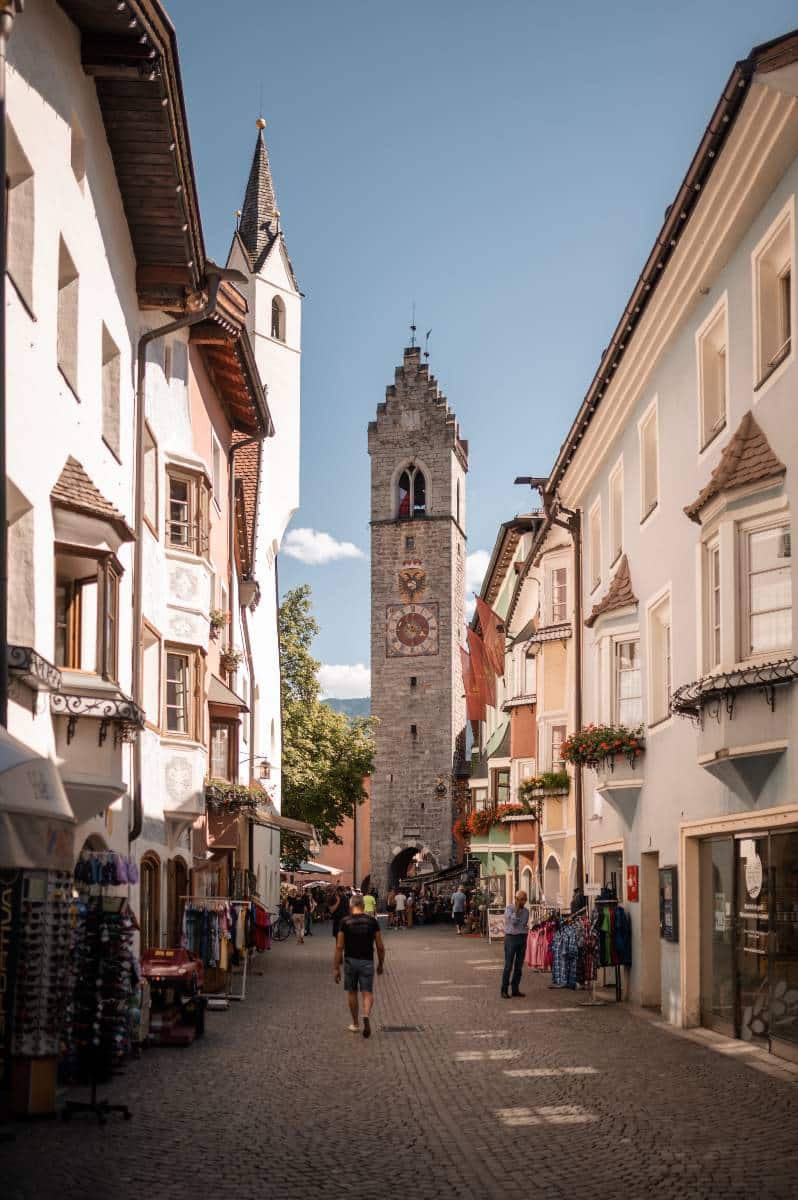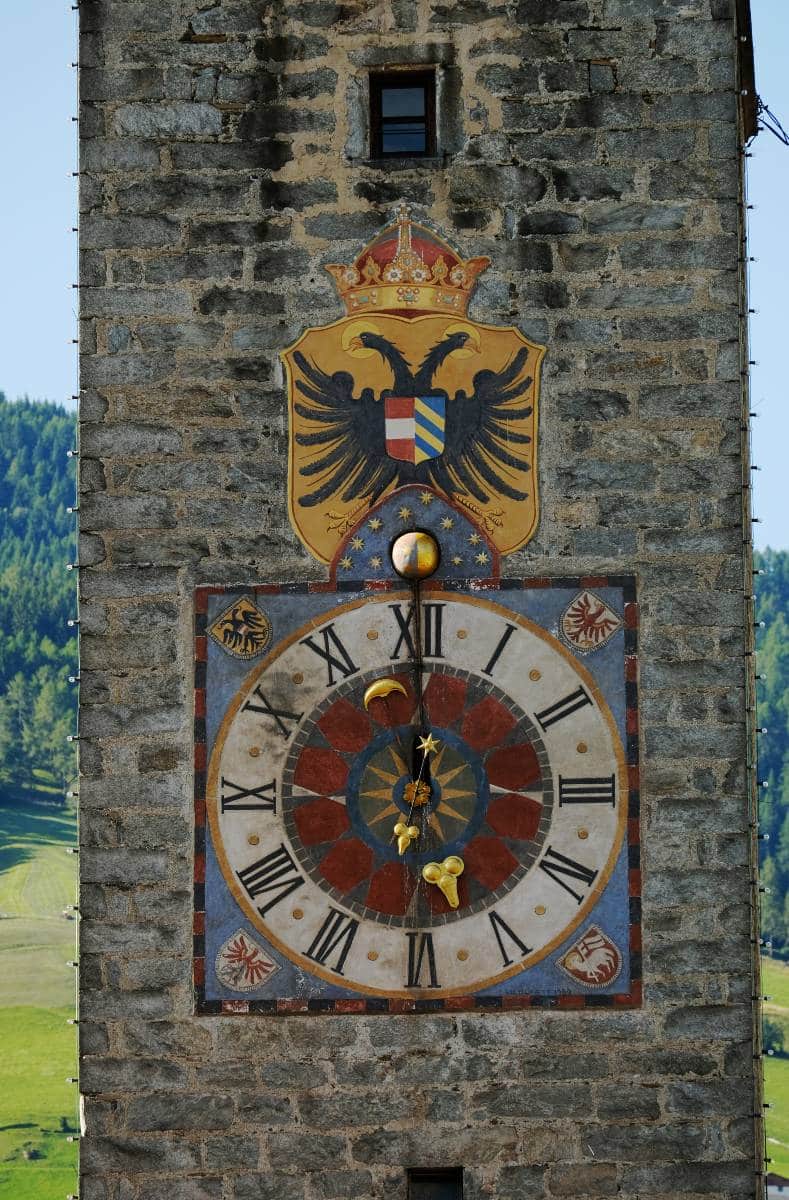Home to the Wipptal (formerly Upper Eisack Valley) ski resort community, the town of Sterzing, South Tyrol, is dominated by Monte Cavallo (Rosskopf, (2,176 m) to the west, Cima Gallina (Hühnerspiel, 2,800 m) to the northeast and Cima di Stilves (2,422 m) to the south. On the slopes of Mount Cavallo are the lifts of the village's ski area, which can be reached in a few minutes from the center. In addition to the regular ski facilities, there is also one of the longest toboggan runs in South Tyrol, just over 10 km long. In summer it is possible to hike and bike in the surrounding mountains.
Few things remain of Roman origin, such as a milestone of Septimius Severus, in which, however, the name of the town does not appear. Instead, the assonant Uuipitina is attested in a document from 827. In a medieval map, a copy of an ancient Roman street directory, Vipitenum appears. The first Roman settlement may date back to 14 B.C., when on a communication route between Italy and transalpine countries, Drusus Major founded a military station there under the name "Vipitenum." From Roman times are the burial monument at Postumia Vittorina and a milestone with a Mithriac bas-relief. In 550, following an invasion of the Baiuvarians, the town of Sterzing developed, but it is not until 1180 that there is the first mention of "Stercengum." There is a legend about Störz a crippled pilgrim as the first inhabitant of the modern town, which even now remains in the town's coat of arms under the wings of the Tyrolean eagle. In fact, this figure in the coat of arms might also hint at the three hospices the town once had. Sterzing experienced its heyday in the 15th and 16th centuries especially after the fire, which damaged part of the town in 1443. Crenellated buildings were rebuilt, some late Gothic, which still adorn its main street.
The Italian toponym Vipiteno takes the ancient Latin name of the alleged Roman camp of Vibidína and is attested as Uuipitina in 827, connected perhaps with the Etruscan personal name *Vipina and with the vallis Vipitina (the upper Eisack valley) that became Wipptal in German. The German place name, on the other hand, is attested as Sterzengum from 1180 and derives from the Germanic person name Starzo, with the meaning therefore of "Starzo's land." From then on the settlement was known to Italian merchants as Sterzen (a fact acknowledged by Tolomei himself) or Sterzinga.
Not to be missed is a visit to the Parish Church "Our Lady of the Marsh" (Unsere liebe Frau im Moos), located just outside the town. It is the tallest church between Munich and Verona; measuring 32 meters in height, the nave is 38 meters long and 23 meters wide. Other suggestions may strike visitors as they admire the Tower of Twelve (Zwölferturm), which has become the symbol of the city and divides the New Town (Neustadt) from the Old Town (Altstadt). Completed in 1472, it is 46 m high. The Town Hall, on the other hand, in late Gothic style, was purchased by the city in 1468 and later in 1526 was renovated and enriched by the characteristic "erker." A bread counter was built on the ground floor and a meat counter in the back. On the upper floors were offices, the council chamber, still one of the most beautiful in South Tyrol, and a ballroom. Finally, inside the Old Commandery of the Teutonic Order (the Deutschhaus), located near the parish church, you can visit: the Civic Museum, the Multscher Museum, the Church of St. Elisabeth, the Music Institute, and the headquarters of the Bürgerkapelle Sterzing (Sterzing city band). The Municipal Museum displays a collection of vintage maps, historical documents concerning the city and old prints of city landscapes; a section is devoted to local crafts. The Multscher Museum preserves the plans and valuable panels of the Gothic altar, built by Hans Multscher for the parish church.
Finally, don't miss the more traditional events, such as the parade along the downtown streets of the Krampus (masked devils) on the occasion of St. Nicholas Day (on the evening of December 5), the Christmas Market, the dumpling festival, the yogurt festival, and the Historical Festival (Sterzinger Osterspiele), held every year close to Easter.


